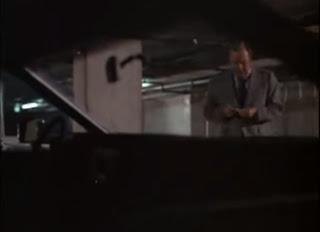Starsky and Hutch: The 'Lightbulb' Killer
('Vendetta')
November 27, 1976
While the show may seem cheesy to today's audiences, back in the mid-70s 'Starsky & Hutch' was a highly-rated series, and we never passed up a chance to catch it on the little 22" black and white TV at our house in upstate New York.
One of the creepiest episodes I remember seeing first aired on November 27, 1976, and was officially titled 'Vendetta', although I will always remember it as the 'Lightbulb' killer episode.
The killer is a young man named Tommy (played by Gary Sandy, who two years later would be cast as 'Andy Travis' in WKRP in Cincinnati).
Tommy is seriously, seriously fucked up; he lies on a dirty mattress all day, in a squalid apartment, staring at a naked light bulb dangling from the ceiling (!)
When sometime friend Jimmy Shannon comes calling...
...Tommy appears, maniacal and wielding a baseball bat....!
His erstwhile friend kisses this world goodbye.
Assigned to the murder of Jimmy Shannon, Starsky and Hutch check out the corpse at the city morgue: broken skull, shoulders, and legs.....
Assigned to the murder of Jimmy Shannon, Starsky and Hutch check out the corpse at the city morgue: broken skull, shoulders, and legs.....
It turns out that Tommy is being manipulated into serving as a 'hit man' by a sleazy, middle-aged bellhop named Artie.
Next on the Hit List: a middle-aged business man (played by M. Emmett Walsh), who needs to be beaten up, but not killed.
As Starsky and Hutch pursue their investigation, the increasingly nervous Artie decides it's best to eliminate Hutch's girlfriend Abby (Ann Foster).
As Starsky and Hutch pursue their investigation, the increasingly nervous Artie decides it's best to eliminate Hutch's girlfriend Abby (Ann Foster).
While Tommy gazes at his lightbulb, the order for murder is given. [These 'lightbulb' sessions featured an eerie - sounding synthesizer background track.]
Wearing Sunglasses At Night (like all stylish Psycho Killers are apt to do) Tommy makes his way to Abby's apartment....
Will Abby survive ? Will Starsky and Hutch catch the lightbulb killer and his evil mastermind Artie ?
I won't reveal any spoilers, but you can watch 'Vendetta' for $2 at amazon Prime video.












































































